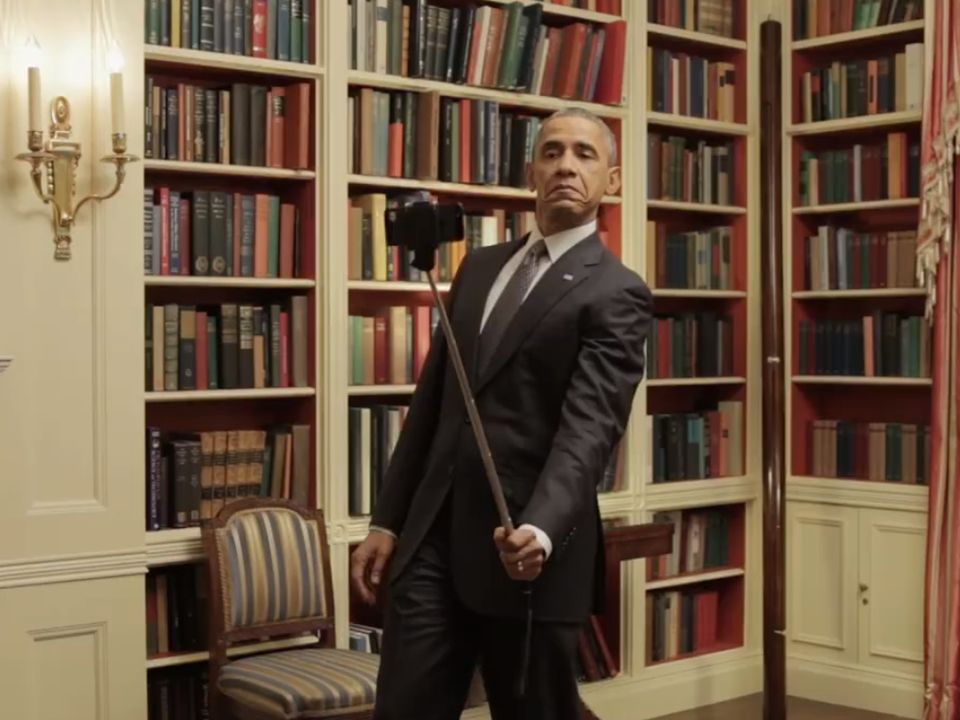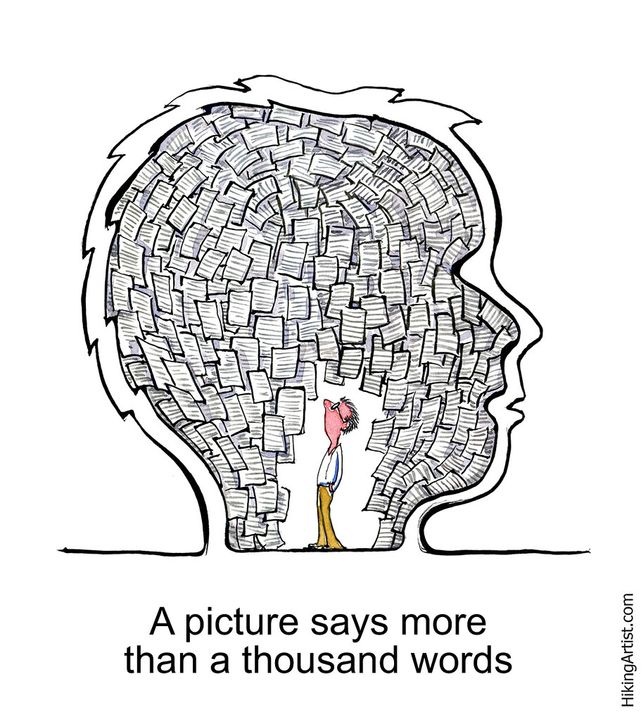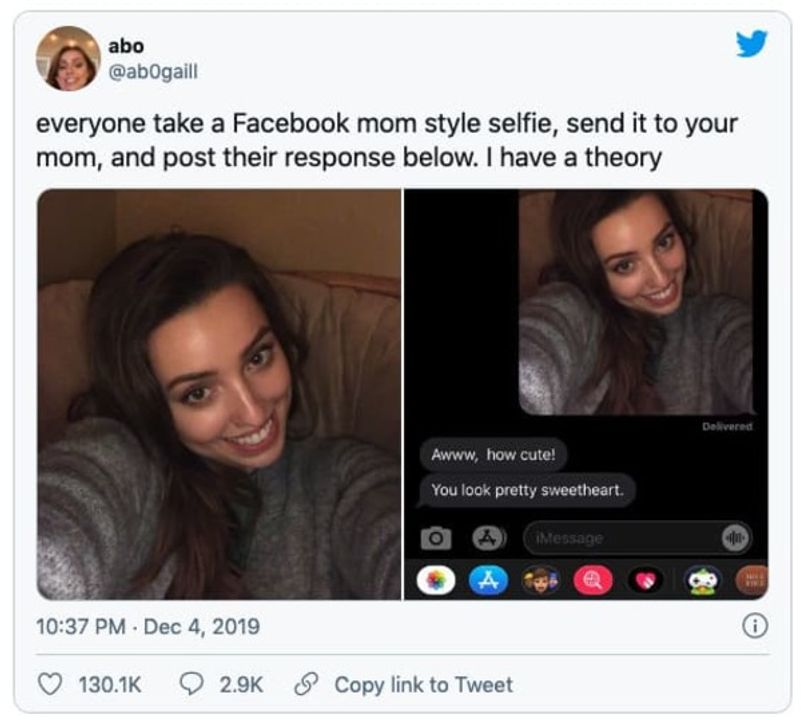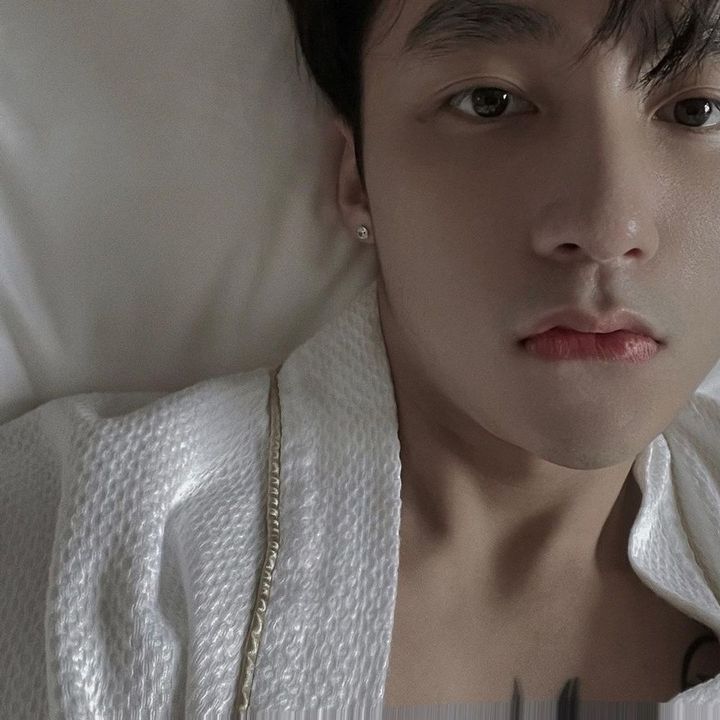Selfie and its indispensable role in everyday communication
People take selfies every day. But do they know the hidden meanings of "selfie" after all? So let's find out the sophisticated importance of selfie in everyday communication through this post!
In contemporary society, web-based communication via social networking sites has become prodigiously popular in human lives as every daily activity merely has the penetration of them. Among thousands of social media content, adolescents nowadays tend to stay more engaged in visual content sharing, particularly selfies. Accordingly, taking and posting selfies constitute two of the most omnipresent activities carried out on those social networking sites (Balakrishnan & Griffiths 2017).
The action of taking selfies refers to a self-oriented behavior in which users can establish indivisibility and portray their self-importance among other people (Murray 2015). With the advancement of computer-mediated communication came the necessity to be represented not only verbally (at the time of the Internet's inception, asynchronous written messages predominated), but also physically, to make a bodiless visual message a reality. Gradually, even though today’s Internet allows for instant communication in which conversants may see and hear each other, the importance of visual representation on the web is critical due to the mediated nature of communication (Orekh, Sergeyeva & Bogomiagkova 2016). Therefore, the importance of selfies in everyday communication in this digital era is portrayed much more clearly than ever as it acts as a useful tool in promoting self-image, revealing oneself, and imparting information during communication.
“Selfie” and “everyday communication”
Selfies are typically defined as “a photograph of oneself (or oneself with other people) taken with a camera or a camera phone held at arm's length or pointed at a mirror and usually uploaded on social media" (Sorokowski et al. 2015). The taking of selfies is not merely a stand-alone action as taking (preparation, staging, posing), adjusting (editing, selection), and sharing images, as well as viewing (browsing) and rating others' selfies through "likes" and comments, are all considered to be part of the selfie-related practices umbrella (Balakrishnan & Griffiths 2017). In a society where people have a strong desire to present themselves and pay more attention to visual messages, selfies are constantly conceptualized as part of everyday communication.
"Communication" is more than just sending messages from one person to another; it has consequences, forms an environment, controls an identity, and even reveals people’s age, gender, color, or culture. That is, whatever sort of everyday communication people engage in assumes a relationship and produces or achieves something for them as a result; communication, in other words, creates a world of meaning (Duck & McMahan 2020, p. 1). The employment of symbols characterizes all communication as it is an object or a concept that has a more profound meaning than it appears (Duck & McMahan 2020, p. 1). Therefore, it cannot be denied that through selfies, non-verbal and visual communication has been portrayed apparently as a selfie itself can also depict a whole world of meaning through every little detail or gesture.
Selfie practices in contemporary times
Selfie has truly become emblematic of modern trends as it has changed and redefined human society, particularly in everyday communicative interaction (Day 2013).
A 2018 report indicates that adolescents are the ones who most take selfies and upload them to social media, which accounts for 82 percent of respondents (Statista 2021). Moreover, adolescents even spend up to 48 minutes per day preparing and taking a perfect selfie for themselves (McKnight 2015). Thought to be dominant for teenagers, the selfie phenomenon has also spread to religious authorities, politicians, and basically everyone in-between: from Franklin Graham who is the son and heir of Billy Graham, the iconic US evangelist to President Obama using a selfie stick in Alaska (Katz & Crocker 2021, p. 131).

Obama with his selfies (The Verge)
According to Mariann Hardey, the reason why selfie is becoming a phenomenon and revolutionizing how people gather information and interact with each other is that it continuously assists humans in rewriting themselves- it is all about how people reveal themselves similar to ladies wearing makeup or guys bodybuild to get a certain appearance (Day 2013).
Besides, among various forms of communication, selfie still plays their own important role and cannot be replaced as it exists the form of visual communication. Visual communication is becoming more popular than ever, especially on social media platforms as research has shown that posts containing visual elements produce 650% higher engagement than text-based posts (Monaghan 2021). Indeed, people nowadays tend to engage in visual communication when it comes to comprehension, pictures are preferred since they are much more memorable and have the ability in conveying more information effectively (Monaghan 2021). Hence, with just an HD camera in the pocket, selfies as a form of visual communication are not only quick and easy to use but also predominant in imparting information during everyday communication.

Source: Flickr
Selfie as a significant part of everyday communication
A photographic object like a selfie can initiate the connection of human feelings in the form of a relationship. While also being a practice, a selfie can be considered as a gesture that can transmit varied signals to different people, communities, and audiences leading selfies to become a significant part of usual communicative interaction in several aspects (Zhou 2017).
While having a close relationship with each other, the application of contemporary selfies in communication is much more far-reaching than self-portraiture before. According to Bruno, selfies are distinguished from traditional self-portraiture by two characteristics.
Firstly, selfies make it more flexible when using and easier to reach out through confabulation. Indeed, most selfies are shot using devices that have front cameras and preview screens which make it simple to look at one's image, choose a position, and take the photo. There is very little training required, and as many photos as desired can be taken fast and essentially for free. None of this would have been feasible with older devices that lacked these functionalities (Bruno et al. 2020, p. 3). In addition, selfies are frequently used to initiate a social connection or respond to other people (when chatting, flirting…) in which the motivations of self-portraits are fairly similar. However, in the traditional context, the interaction was largely absent because image creation necessitated sophisticated technical skills as well as complex equipment and because of the unavoidable temporal gap between image creation and its display for viewing. Selfies, on the other hand, are self-portraits that can be taken by almost anyone for free and shared freely and instantaneously across a variety of social media platforms (Bruno et al. 2020, p. 3).
The second difference marking selfies as an irreplaceable tool of communication in today’s world instead of its precursor- self-portraits is that selfies are preeminently shareable by virtue of the increased availability of internet connections. Nowadays, it is believed that more than half of the world’s population has access to the Internet, compared to less than 1% in the past century (World Internet Stats n.d.). The rapid expansion of the internet infrastructure prompted the creation of social network programs that facilitate users to share photos, including photographic self-portraits. All of the preceding have an essential implication in terms of social behavior: Selfies are, above all, interactive as they allow for interpersonal communication in a way that is both qualitatively and quantitatively superior to traditional self-portraiture.

This is self-portraiture (My Modern Met)

This is selfie (My Modern Met)
For users, in general, a selfie is an effective tool to communicate and keep engaging with other people around them. Although it is not true that every selfie plays a conversational role, selfies as a tool for maintaining relationships cannot be underestimated. It is frequently seen that selfies as a tool for communicating with people by the posts on social media platforms such as Facebook, Instagram, Snapchat... but the fact is, many users take selfies and just send them to specific people via emails, text messages... (Bruno et al. 2020, p. 2). The fact that most people use a selfie as a response to the sender in the private message implies that visual communication created by a selfie is a two-way modality in which it offers a grammatical structure for both the process and content of photo exchanges (Katz & Crocker 2015, p. 1867). As a result, external looks and perfection are not the top concern of these photos as it is simply a way to stay in touch and communicate with friendship circles well (Hamlet 2019).

Anyone here still needs to send a selfie for your parents' checking? Source: Ruin My Week
Selfie as a means of connection in everyday communication can be differently seen somehow through the case of celebrities. Besides the commercial purposes, celebrities also make use of selfies in order to stay in touch with their fan and the general public on a daily basis (Jerslev & Mortensen 2015, p. 8). With a view to having phatic communication, selfies here are referred to as a form of “mediated sociability” for celebrities as providing substantial information is not required, but to develop relationships with their fans (Jerslev & Mortensen 2015, p. 8). Celebrity selfies engaging in phatic communication have elicited immediate amazement and acceptance from their fans and followers. Users can validate their co-presence by sharing, commenting on, 'liking' the photos, and emulating celebrities in their own selfies (Jerslev & Mortensen 2015, p. 10).

My husband with his daily selfie (๑•̀ㅂ•́)و
Furthermore, transmitting information through a selfie is also a significant role in everyday communication. Indeed, a selfie can imply certain attitudes and ideas based on the intriguing ambiguity or multi-layered meanings it may contain (Katz & Crocker 2021, p. 133). Selfies are symbols as well as symbolic representations of self, they are indicators that elicit or provoke a variety of interpretations, and hence communicate ideas that viewers may decipher (Katz & Crocker 2021, p. 133). From the perspectives of the senders, people can convey information about their bodies iconically in selfies since the picture depicts their looks and they can express information about their mental states indexically by modifying the composition of the photo (Bruno et al. 2020, p. 4). Also, through the lens of viewers, a selfie can truly be a sophisticated communication tool that based on that, other people can somehow read each other’s faces and interpret one’s thoughts hidden behind the mask of one’s visage. The symbols and iconic shown in a selfie may not necessarily have an impactful meaning, it can simply be used to provide viewers with an idea of what the person in a selfie is doing and where he is now.
Additionally, self-presentation including self-confidence and self-esteem during everyday interactive communication can be substantially enhanced with the involvement of selfies. Any activity or action taken with the purpose of influencing or changing how others perceive a person is referred to as self-presentation. Because it always involves at least two people- the person presenting themselves and the person being presented to, self-presentation is best conceived as a form of communication (Skills You Need n.d.). The personal presentation encompasses what others both see and hear about a person including their appearance, their actions, and good self-presentation also necessitates a high level of self-esteem and confidence (Skills You Need n.d.).
Therefore, a selfie is such an efficacious mechanism for improving self-presentation during communicative interaction as it can be referred to as a self-confidence booster. Through selfies, people can take pleasure in their own bodies and appraise themselves and positive appearance-related information can be imparted due to selective self-presentation (Travers 2020). In addition to selfie-taking and sharing, engagement in techniques to improve self-presentation in everyday communication, such as editing and using filters also has been taken into consideration. Fascinating qualitative research of Singaporean females’ selfie-editing habits provides some insight into the motives for using the feature. These adolescent females considered selfie editing to be an essential technique for securing an ideal self-presentation with a view to impressing their friends (Travers 2020). In addition, selfie editing was utilized to cope with insecurity and poor self-esteem as looking good in a selfie can increase happiness and boost self-confidence (Martin 2018).
Conclusion:
Rather than being a phenomenon with the purpose related to taking a photo of oneself, selfie themselves encompasses a variety of uses and intentions, especially in everyday communication. The aforementioned fundamental grounds have explained thoroughly how the establishment of the selfie has gradually emerged as an indispensable form of everyday communication by gaining insight into its specific function of communicative interaction at the present time. Through analysis, it can be seen that under a form of not only verbal but also visual communication- a preferred kind of communication in contemporary times, the selfie has activated its optimum role in revealing the power of the facial image in the digital era.
Besides its convenient usage with just a camera-equipped needed, the selfie knows how to engage people in using it through the substantial information and meaning it conveys. In present times and also, in the future, the selfie will undoubtedly continue to be a significant part of everyday communication due to its impact on how we visualize, perceive, and interpret the surroundings. Indeed, the importance of selfies in everyday communication may remain and develop considerably as humans now live in an image-based world (Katz & Crocker 2015, p. 1870).

English Zone
/english-zone
Bài viết nổi bật khác
- Hot nhất
- Mới nhất